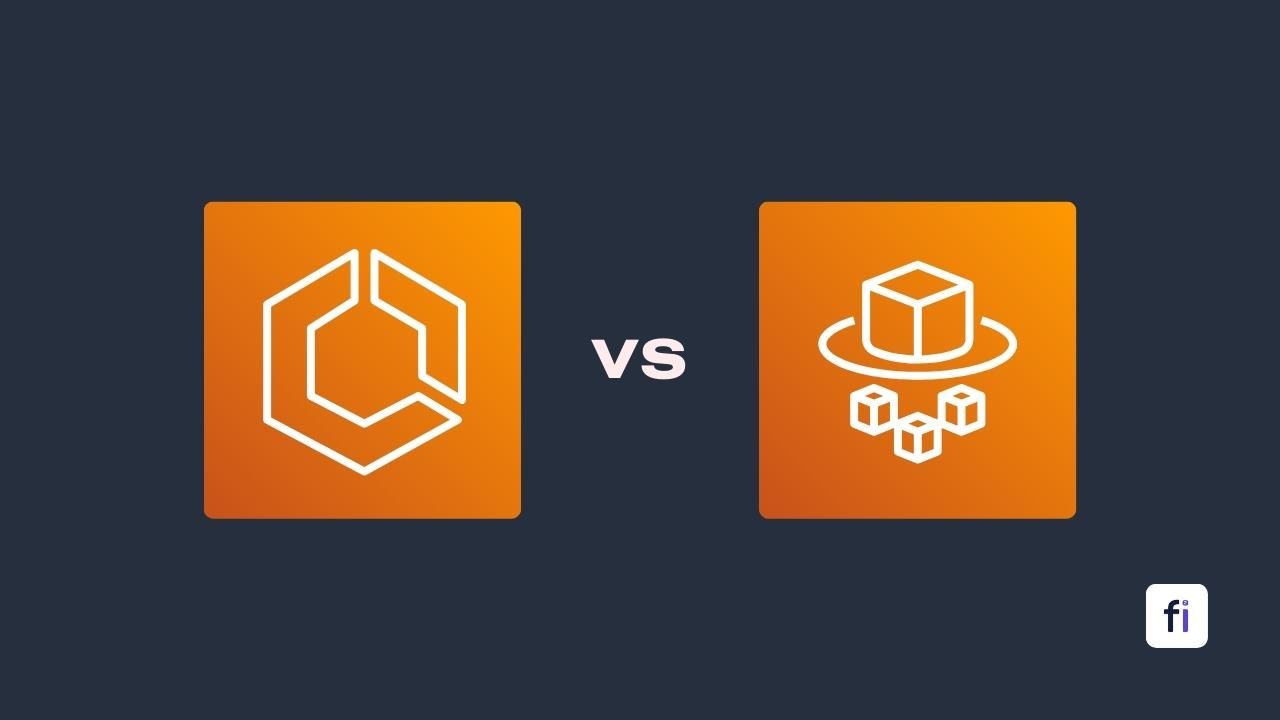
If you're looking to run containers on the AWS Cloud, you have two popular options: Amazon Elastic Container Service (ECS) with EC2 and Fargate. Both services offer powerful features for deploying, managing, and scaling containerized applications but differ in several ways. While ECS allows you to run Docker containers, Fargate is a serverless option that does not require managing servers or clusters.
What is Amazon ECS?
Amazon Elastic Container Service (ECS) is a container management service that allows you to run, stop and manage Docker containers on a cluster of Amazon EC2 instances.

With ECS, you can launch Docker containers on a managed cluster of Amazon EC2 instances running the ECS container agent. The ECS agent is a process that runs on every instance in your cluster and registers the resources of that instance with ECS.
ECS allows you to run and scale containerized applications without having to worry about managing the underlying infrastructure. You can think of it as a Kubernetes-like orchestration layer on top of EC2 infrastructure.
Some key features of ECS include:
- Launch Docker containers on EC2 instances
- Monitor the health of containers and replace unhealthy ones
- Scale up or down based on demand
- Integration with other AWS services like IAM, VPC, CloudWatch etc.
- Supports Docker Compose files for multi-container apps
How Does ECS Work with EC2?
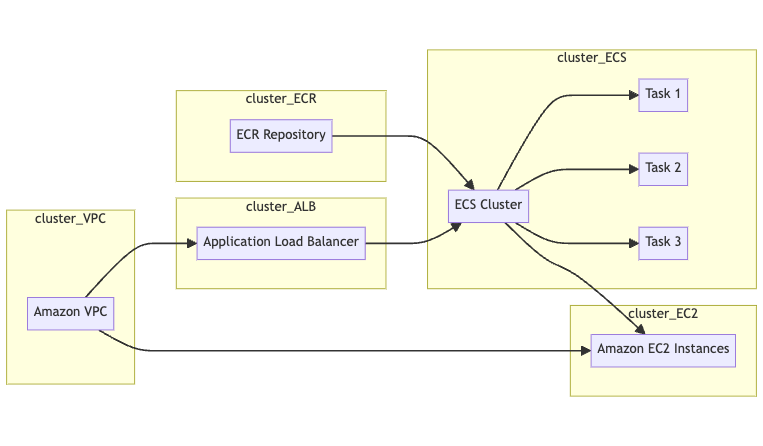
When you use ECS with EC2, you launch a cluster of EC2 instances that act as container hosts. These instances can be launched using either the Amazon ECS-optimized AMI or a custom AMI that meets the ECS container instance requirements. Once your instances are running, you can register them with your ECS cluster and start deploying containers to them.
ECS supports two launch types: EC2 and Fargate. With the EC2 launch type, you have full control over the underlying EC2 instances and can customize them to meet your specific needs. This launch type is ideal if you have existing EC2 hardware that you want to leverage, or if you need to run containers that require specific hardware configurations.
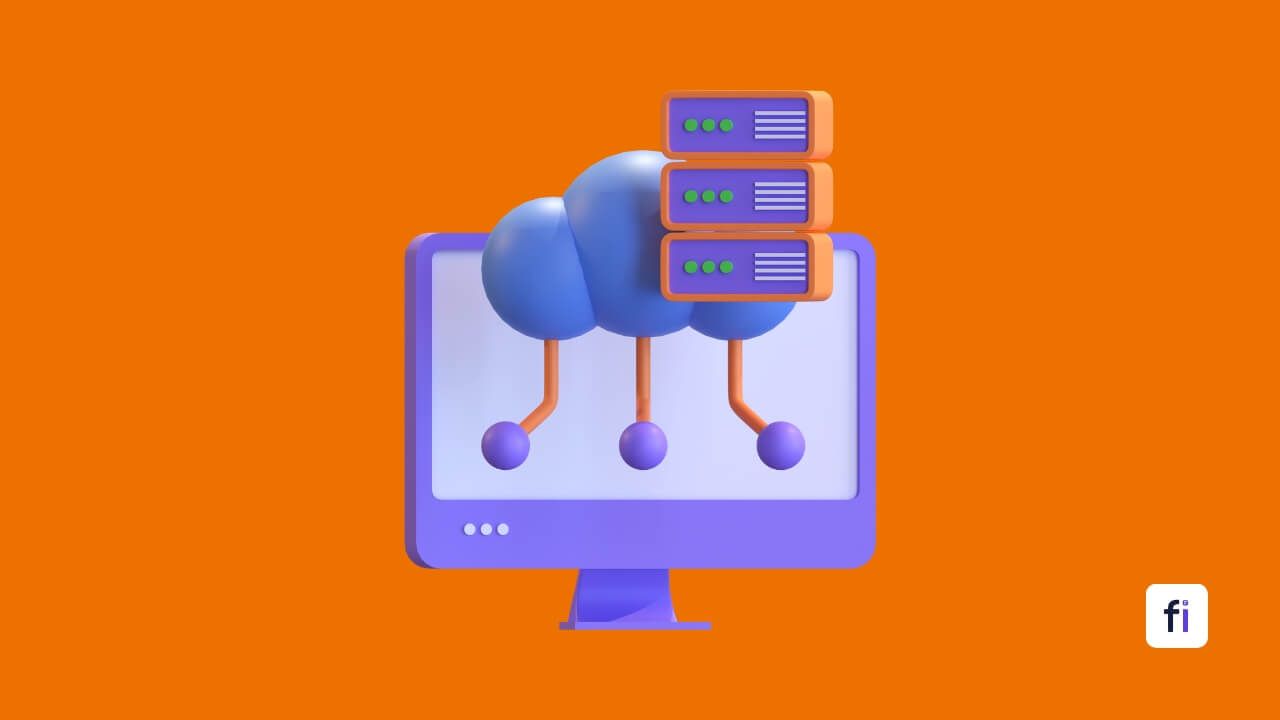
What is AWS Fargate?
AWS Fargate is a serverless computing engine for containers. With Fargate, you don't have to provision or manage any servers. You just define the resources your container needs and Fargate provisions them on your behalf.
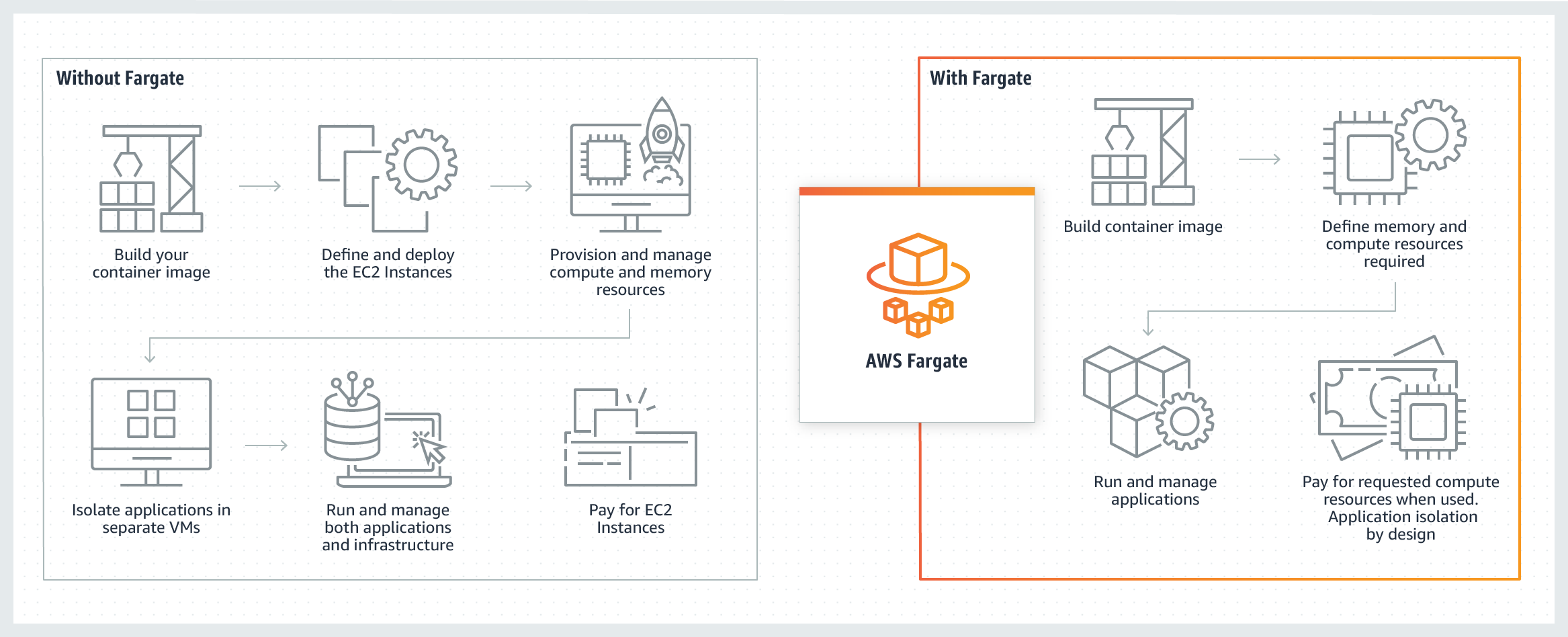
Fargate works with both ECS and EKS (Elastic Kubernetes Service). When using Fargate, you don't have to worry about scaling cluster capacity. Fargate allows you to focus on designing and building your applications instead of managing the infrastructure.
Some key aspects of Fargate:
- Completely serverless – no EC2 instances to manage
- Pay per actual resources consumed
- Integrates with ECS and EKS
- Supports both Linux and Windows-based containers
- Handles underlying infrastructure and clustering
- Auto-scaling built-in
How Does Fargate Work?
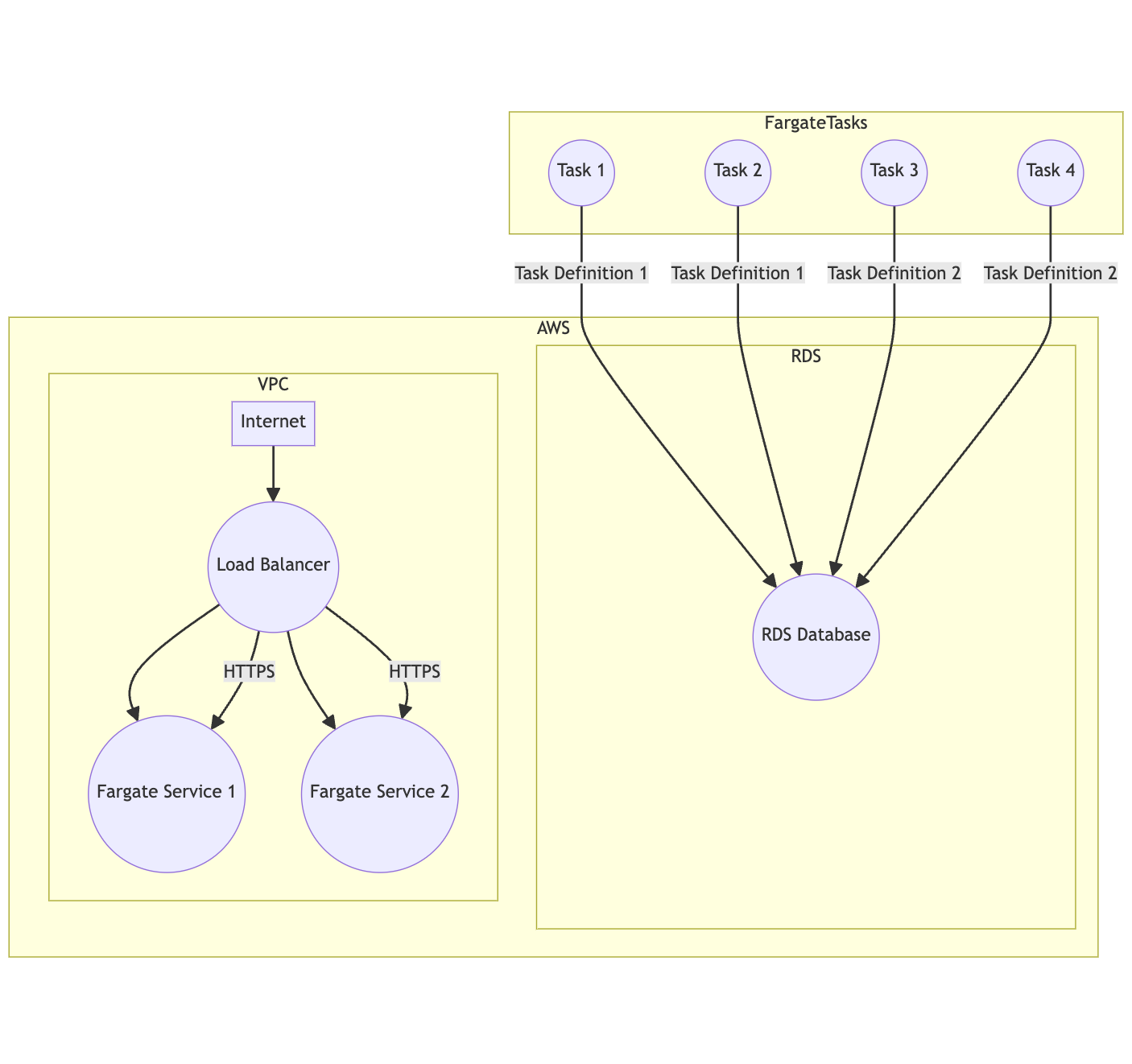
When you use Fargate, you don't have to worry about launching or managing EC2 instances. Instead, you define your containerized applications using task definitions, which specify the Docker image, CPU and memory requirements, and other configuration details. Fargate then provisions the necessary compute resources to run your containers, and automatically scales them based on demand.
Fargate supports the same APIs and CLI commands as ECS with EC2, so you can use the same tools and workflows to manage your containers on Fargate. However, Fargate does have some limitations compared to ECS with EC2. For example, you can't customize the underlying infrastructure, and you have less control over the networking and security configurations.
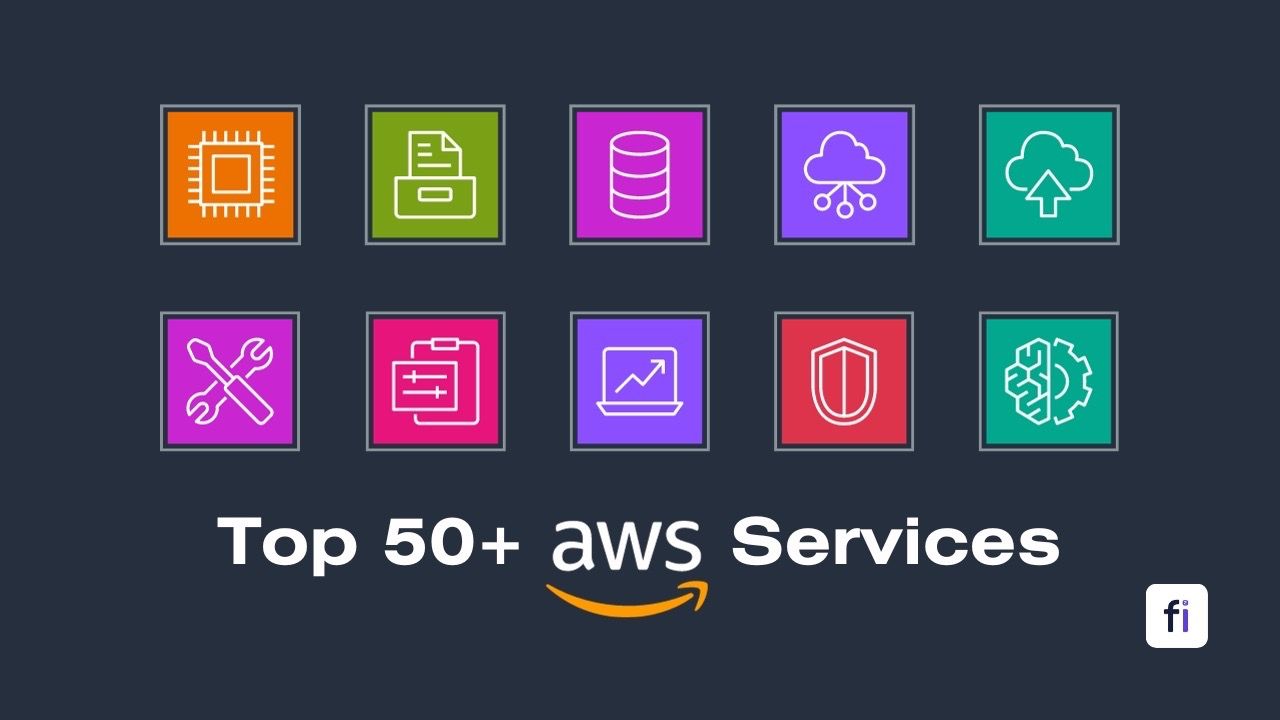
ECS vs Fargate
Let's compare running containers directly on EC2 vs using the serverless Fargate option.
1. ECS (Elastic Container Service)
With this option, you provision and manage your own EC2 instances. ECS allows you to run Docker containers on these instances.
- You have full control and visibility into the underlying infrastructure
- Ability to customize EC2 instances based on type (CPU, memory optimized etc.)
- Leverage EC2 features like spots, reserved instances etc.
- Affordable for stable long-running workloads
- More operational overhead to manage the EC2 fleet
EC2 + ECS is best suited for predictable, stable workloads that require sustained use of resources. The fixed cost model of EC2 makes it ideal for long-running containerized applications.
2. Fargate
Fargate allows you to run containers without having to manage any virtual servers.
- No EC2 servers to manage and scale
- Pay for resources consumed per application
- Rapid scaling based on demand
- Integrated with ECS and EKS
- Reduce operational overhead
- Limited customization options compared to EC2
- Higher cost for stable long-running workloads
Fargate shines for workloads that are spiky, unpredictable or not consistently high usage. You only pay for the vCPU and memory resources when your containers are running. The hourly cost can add up quickly for steady 24/7 workloads.
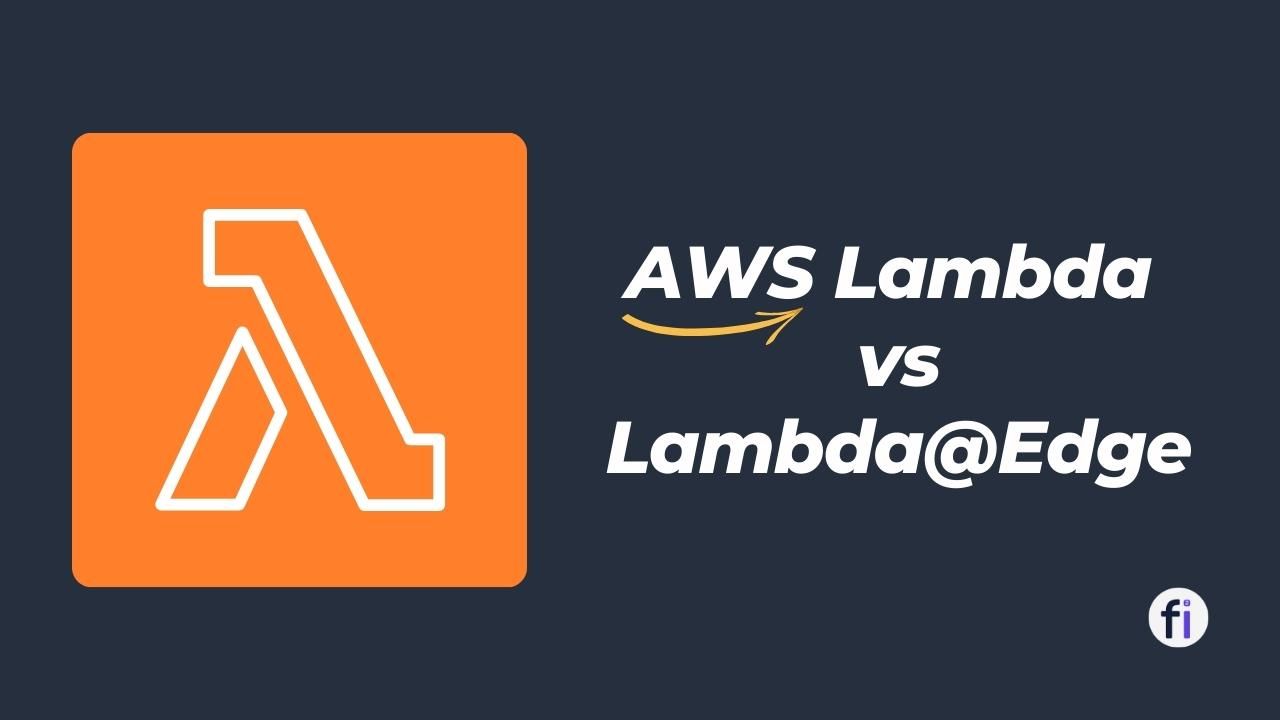
Infrastructure Management
The biggest difference between ECS and Fargate is the level of infrastructure management required. With ECS, you have full control over the underlying EC2 instances, and you're responsible for managing the infrastructure, including patching, scaling, and monitoring. This gives you more flexibility and control but also requires more time and effort to manage.
With Fargate, AWS takes care of the infrastructure management for you, so you don't have to worry about patching, scaling, or monitoring the underlying EC2 instances. This makes it easier to deploy and manage your containers but also limits your ability to customize the infrastructure.
Cost
1. ECS with EC2 Pricing
Another key difference between ECS with EC2 and Fargate is the cost. With ECS with EC2, you pay for the EC2 instances that you launch, as well as any other AWS services that you use, such as load balancers or EBS volumes. This can be more cost-effective if you have a large number of containers running on a cluster of EC2 instances.
With ECS using EC2 launch type, you pay for:
- EC2 instance cost - The hourly cost for each EC2 instance based on type, region etc. Runs whether containers are active or not.
- EBS storage - EBS volumes attached to EC2 if using EBS for persistent storage.
- Load balancer charges - For Application and Network Load Balancers.
- Data transfer charges - Data transfer costs for traffic in/out of VPC.
EC2 gives you full visibility into the costs of every component of your infrastructure. Plan capacity ahead of time to minimize waste. Purchase reserved capacity for best rates on stable workloads.
2. Fargate Pricing
With Fargate, you pay only for the compute resources that your containers use, based on the CPU and memory requirements specified in your task definitions. This can be more cost-effective if you have a smaller number of containers running, or if you have variable workloads that require frequent scaling.
With Fargate, pricing is much simpler. You only pay for:
- vCPU - Per vCPU-hour used for the containers. Rounded up to the nearest second.
- Memory - Per GB-hour allocated to the container. Rounded up to the nearest MB.
- Data transfer - Same data transfer rates as EC2.
- Load balancing - Same ALB/NLB rates as EC2.
So Fargate bills precisely based on the vCPU and memory resources consumed by your containers every second. No server management overhead.
Customization
ECS with EC2 allows for more customization than Fargate. You have full control over the infrastructure, so you can customize the hardware, networking, and security configurations to meet your specific needs. This makes it easier to run containers that require specific hardware or networking configurations.
With Fargate, you have less control over the underlying infrastructure, so you can't customize the hardware, networking, or security configurations as easily. This can make it more difficult to run containers that require specific configurations.
Performance
Both ECS with EC2 and Fargate offer high-performance container orchestration, but there are some differences in how they handle performance. With ECS you can optimize the hardware and networking configurations to achieve the best performance for your containers. This can be especially important for applications that require high levels of CPU or memory resources.
With Fargate, you don't have as much control over the hardware and networking configurations. However, Fargate is designed to provide high-performance computing resources for your containers, and AWS continually optimizes the infrastructure to ensure that your containers run smoothly.
Security
Both ECS with EC2 and Fargate offer strong security features for containerized applications. With ECS ,you can customize the security configurations to meet your specific needs. This can be especially important for applications that require high levels of security, such as those that handle sensitive data.
While, Fargate is designed to provide a secure environment for your containers out of the box, and AWS implements a range of security features, such as isolation between containers and secure networking, to ensure that your applications are protected.
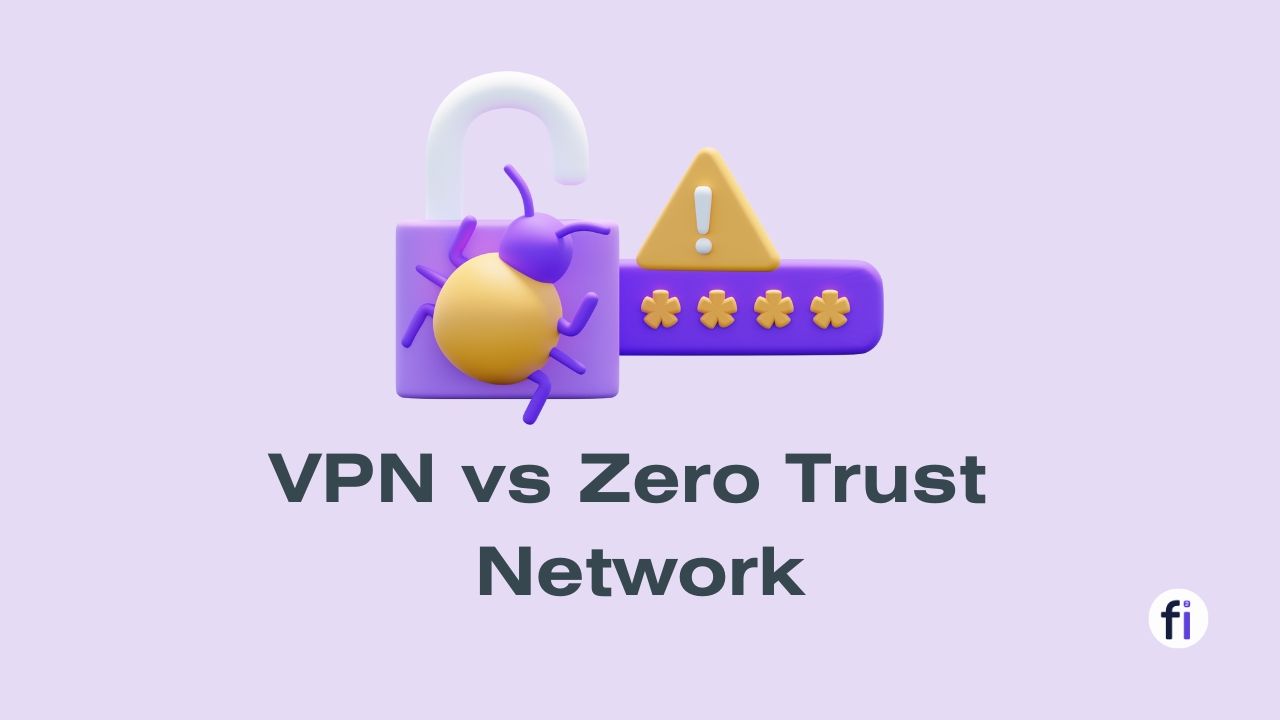
ECS vs Fargate – Key Differences
- Servers - With ECS + EC2, you manage your own EC2 servers. Fargate is completely serverless.
- Infrastructure - ECS allows you to customize and control the underlying infrastructure when using EC2. Fargate abstracts this completely.
- Scaling - For ECS + EC2, you need to scale your EC2 fleet to accommodate growth. Fargate handles this automatically.
- Capacity Planning - With EC2, you need to plan capacity based on peak estimated utilization. Fargate scales precisely with demand.
- Availability - ECS + EC2 requires running your EC2 fleet across AZs for high availability. Fargate naturally runs containers across multiple AZs.
- Billing - EC2 instances have a fixed hourly cost. Fargate bills per second based on actual vCPU/memory used.
- Long Running Tasks - For steady 24/7 workloads, EC2 reserved instances can offer significant savings. Fargate hourly billing adds up.
- Control - ECS + EC2 offers fine-grained infrastructure control. Fargate limits customization to the application layer.
So in summary, ECS + EC2 gives you more control over the infrastructure, while Fargate is fully managed and serverless.
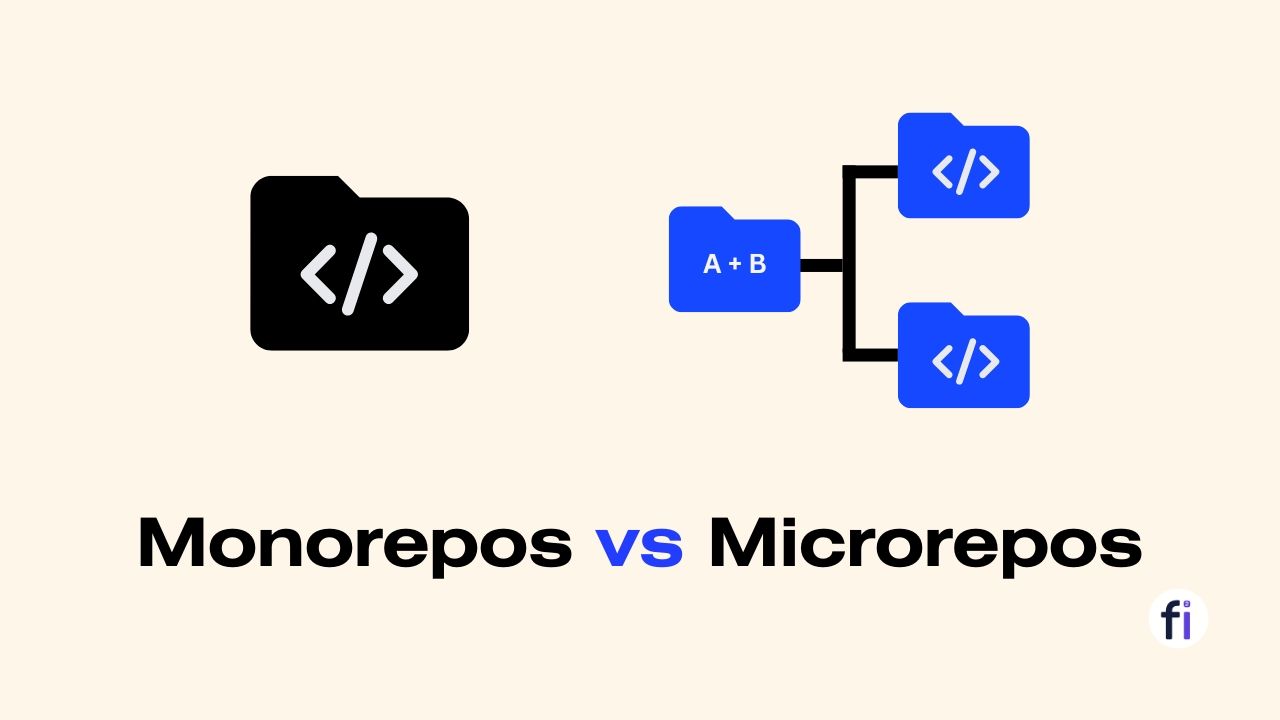
ECS vs Fargate: Key Concepts
1. Tasks and Task Definitions
A task is the instantiation of a Docker container running an application on either ECS or Fargate.
A task definition acts as a template for your task. It defines parameters like Docker image, CPU/memory settings, networking options etc. Task definitions are immutable once created.
2. Clusters
A cluster provides a logical grouping of resources and tasks. You can run many different task definitions on a single cluster.
For ECS + EC2, a cluster is a grouping of EC2 instances. For Fargate, it is simply a logical unit to run tasks.
3. Services
A service enables you to run replicated copies of a task in a cluster. This allows you to scale the number of tasks running based on demand.
Services integrate with Elastic Load Balancing to distribute traffic across the tasks. Health checks monitor task health and replace unhealthy ones automatically.
4. Container Agent
The ECS container agent is a process that runs on each EC2 instance in your ECS cluster. It registers container resources to ECS and starts/stops tasks as desired.
The agent handles interfacing between ECS and your EC2 resources. Fargate does not require container agents.
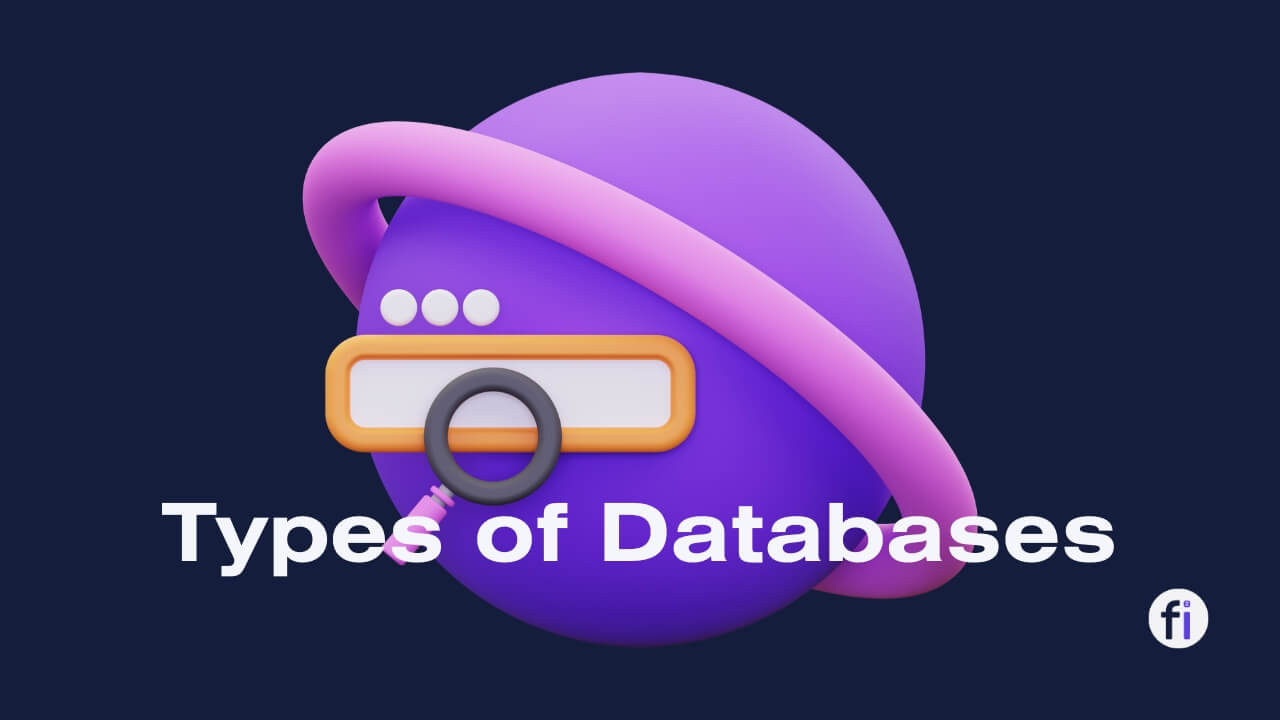
When to Use ECS vs Fargate?
Based on the differences highlighted so far, here are some guidelines on when to use ECS + EC2 vs Fargate
When to Use ECS
- You need sustained use of resources for steady predictable workloads
- Apps require customization or control over the host infrastructure
- Leveraging reserved EC2 instances for significant cost savings
- Large memory or storage requirements are not available on Fargate
- Need direct host access for performance monitoring & debugging
- Require GPU instances, ARM instances or specialized hardware
When to Use Fargate
- Want auto-scaling without managing and scaling the EC2 fleet
- Spiky, unpredictable workloads with fluctuating demand
- Meeting base computing demand with occasional spikes above
- Prefer paying for only resources consumed per application
- Avoid commitment and overhead of provisioning & managing servers
- Fully managed and hands-off infrastructure
- Quickly deploying containers without configuring servers
As shown above, fixed steady workloads favour EC2 while spiky unpredictable ones are better suited for Fargate. Combining both ECS + EC2 and Fargate also provides maximum flexibility.
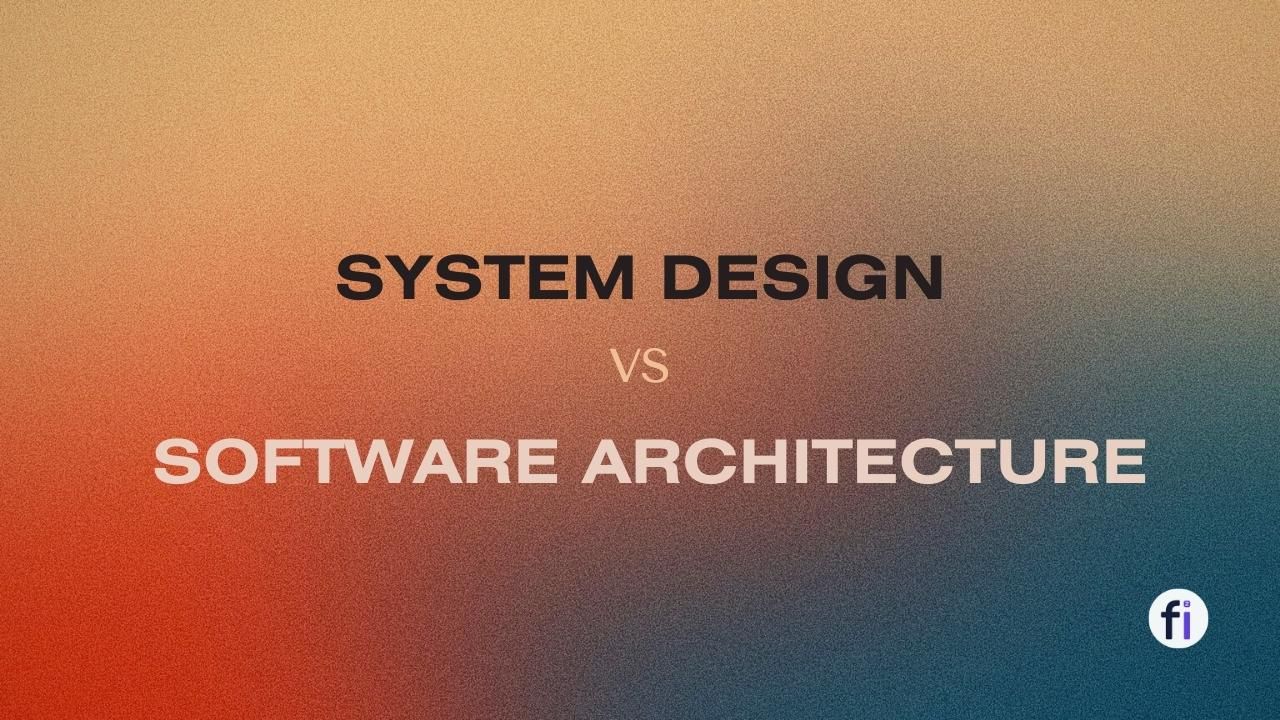
Factors to Consider for ECS vs Fargate
1. Workload Size
If you have a large number of containers to run, ECS with EC2 may be more cost-effective, as you can leverage the existing EC2 instances to run your containers. However, if you have a smaller number of containers, or if you have variable workloads that require frequent scaling, Fargate may be more cost-effective, as you only pay for the compute resources that your containers use.
2. Needs
If you require a high level of customization for your infrastructure, such as specific hardware or networking configurations, ECS with EC2 may be a better option, as you have full control over the underlying EC2 instances. However, if you don't require as much customization, or if you prefer a more hands-off approach to infrastructure management, Fargate may be a better option.
3. Security Requirements
If you require a high level of security for your applications, both ECS with EC2 and Fargate offer strong security features. However, if you require more control over the security configurations, ECS with EC2 may be a better option, as you have full control over the underlying EC2 instances. On the other hand, if you prefer a more hands-off approach to security management, Fargate may be a better option, as AWS manages the underlying infrastructure for you.
4. Performance Needs
If you require high levels of performance for your applications, ECS with EC2 may be a better option, as you have full control over the hardware and networking configurations. However, if you don't require as much control over the performance configurations, or if you prefer a more hands-off approach to infrastructure management, Fargate may be a better option.
5. Development Workflow
Finally, consider your development workflow when choosing between ECS with EC2 and Fargate. If you're already using ECS with EC2, it may be easier to continue using this service, as you can leverage your existing infrastructure and workflows. However, if you're starting from scratch, or if you prefer a more serverless approach to infrastructure management, Fargate may be a better option.
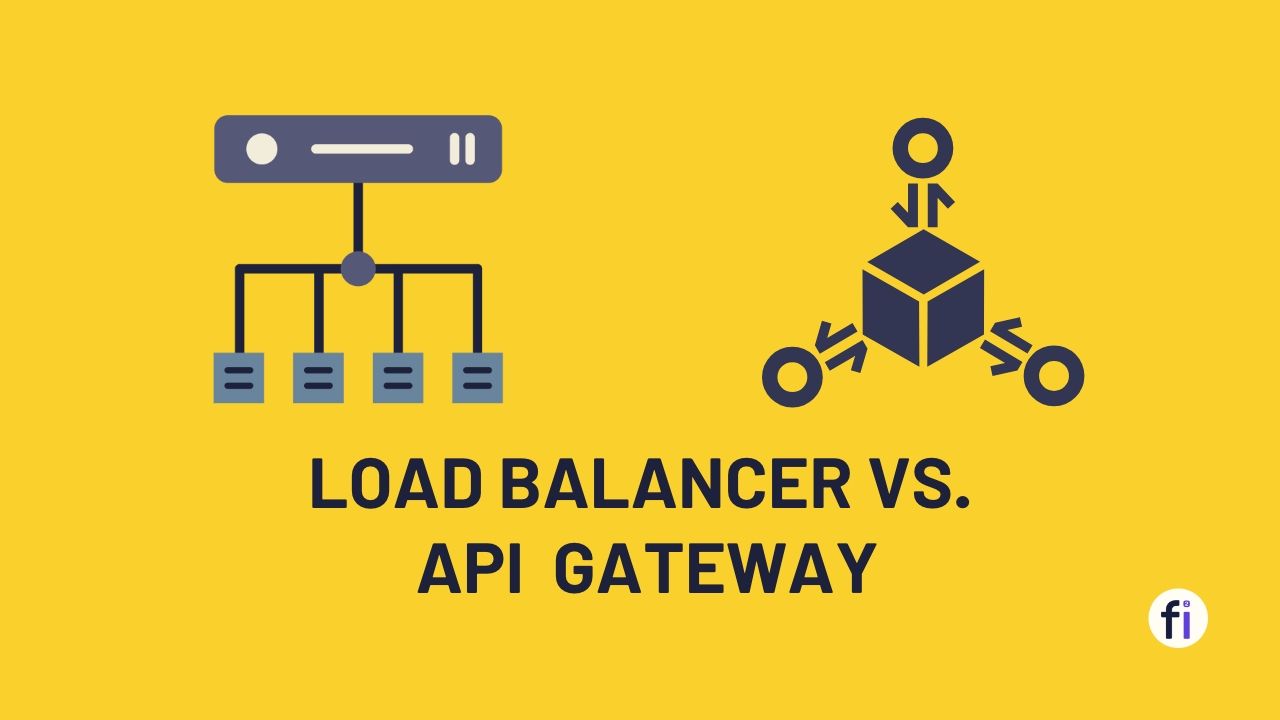
ECS vs Fargate – Use Cases
1. Microservices
Fargate is great for running independent microservices. You can scale each one independently while Fargate handles the infrastructure. No need to manage servers or coordinate scaling across services.
Fargate allows focusing only on the application logic and pivoting quickly. Microservices architectures thrive on Fargate.
2. Serverless APIs
Building API backends is ideal for Fargate. You get fine-grained scaling, only pay for what you use, and can develop faster without configuring servers.
Event-driven serverless applications using APIs shine on Fargate. It removes overhead so you can deliver faster.
3. CI/CD Pipelines
Container-based builds are perfect for Fargate. No need to provision a large build server that mostly sits idle.
Fargate allows allocating build resources on the fly for each build. No idle capacity or overprovisioning is required.
4. Batch Processing
Batch jobs that need to rapidly spin up containers to process large volumes of data tremendously benefit from Fargate.
No need to wait for servers to be ready. Fargate can start containers almost instantly to crunch batches of data.
5. Migrating to Containers
Migrating legacy apps to containers can be accelerated with Fargate. No need to set up and configure container infrastructure.
Fargate allows you to focus only on containerization without the overhead of building a container platform.
6. Spiky Workloads
Applications with extremely spiky traffic volumes or unpredictable demand spikes are made for Fargate.
Fargate can scale precisely to meet spikes of 10-20X normal traffic by rapidly allocating additional resources.
Conclusion
Both AWS ECS with EC2 and Fargate offer powerful features for deploying, managing, and scaling containerized applications.
Here are some important points to note:
- ECS + EC2 gives you control over the infrastructure, while Fargate is completely serverless.
- EC2 reserved instances can offer significant savings for steady base loads.
- Fargate allows instant scaling without managing servers.
- Microservices, APIs and spiky workloads thrive on Fargate.
- Look for opportunities to blend both ECS + EC2 and Fargate.
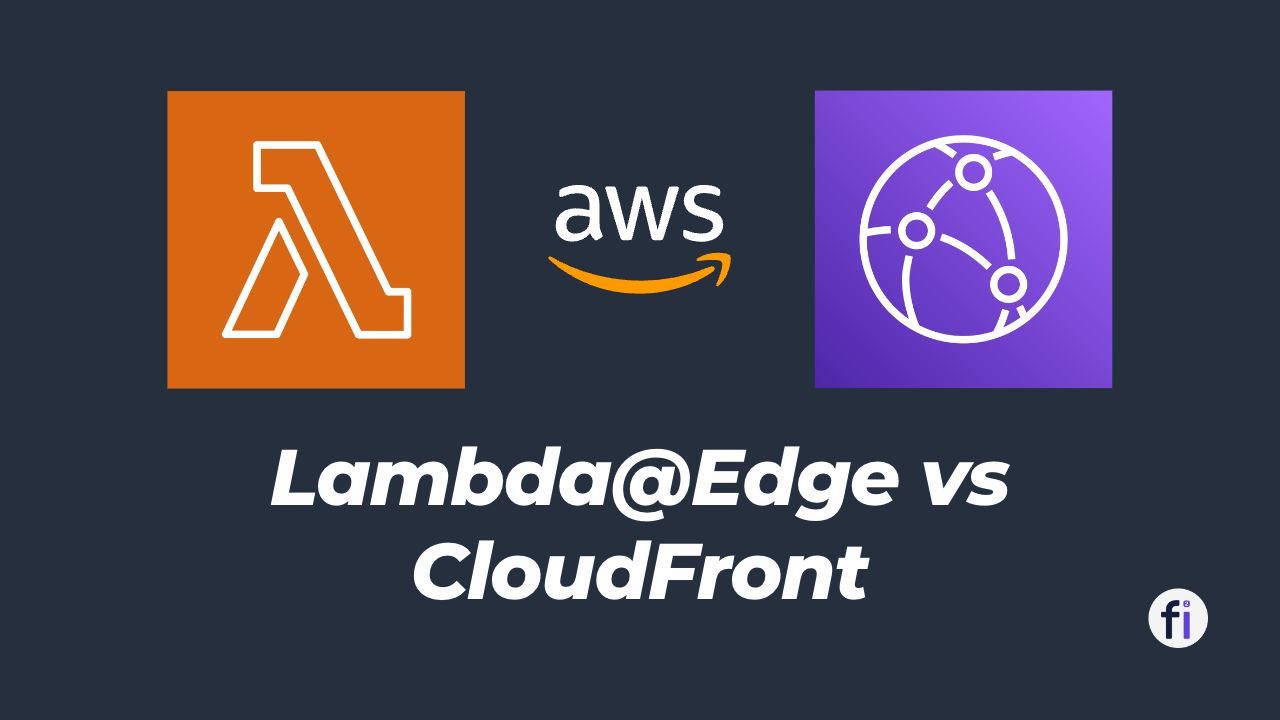
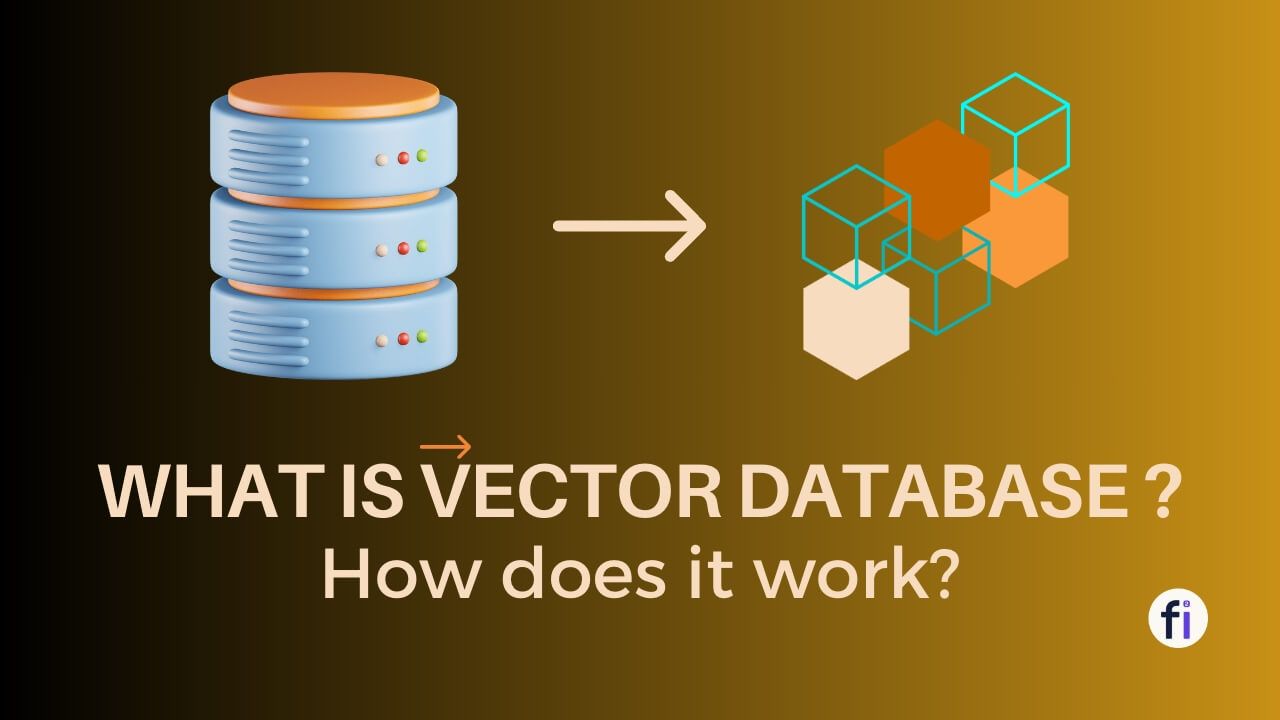
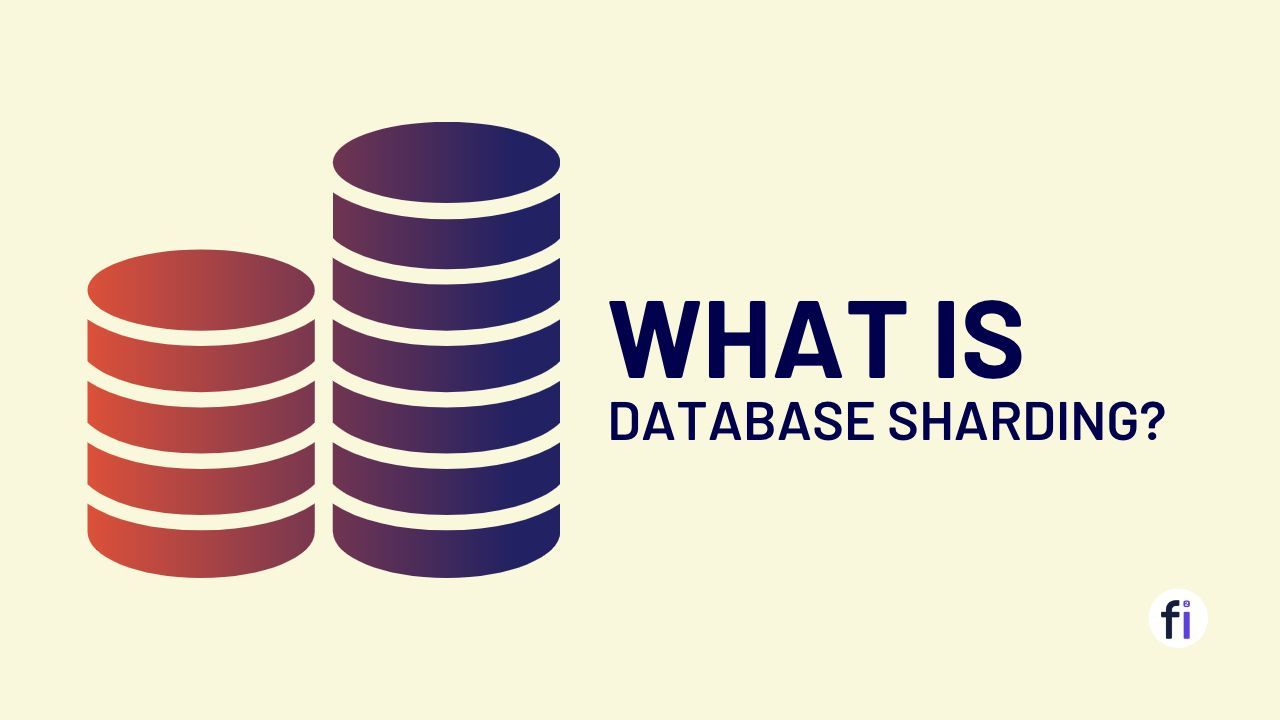
FAQs
What is ECS?
ECS stands for Elastic Container Service and allows you to easily run Docker containers on AWS infrastructure.
What are ECS clusters?
ECS clusters are groups of compute resources like EC2 instances or Fargate tasks that run your containers.
Should I use Fargate or EC2 for ECS?
For most use cases, Fargate is recommended for its simplicity and lack of server management. However, EC2 provides more control and customization if needed.
When would I use EC2 instead of Fargate?
Use EC2 when you need custom OS or kernels, GPUs, have steady-state workloads or want more infrastructure control.
What’s the difference between tasks and services in ECS?
Tasks run individual containers. Services manage fleets of tasks with scaling and availability features.
How do I secure my containers and infrastructure when using ECS or Fargate?
You should follow security best practices, such as using IAM roles to control access to your containers, encrypting data at rest and in transit, and using secure networking protocols. AWS provides a number of security features and tools, such as AWS Identity and Access Management (IAM) and Amazon Virtual Private Cloud (VPC), that can help you secure your containers and infrastructure.
